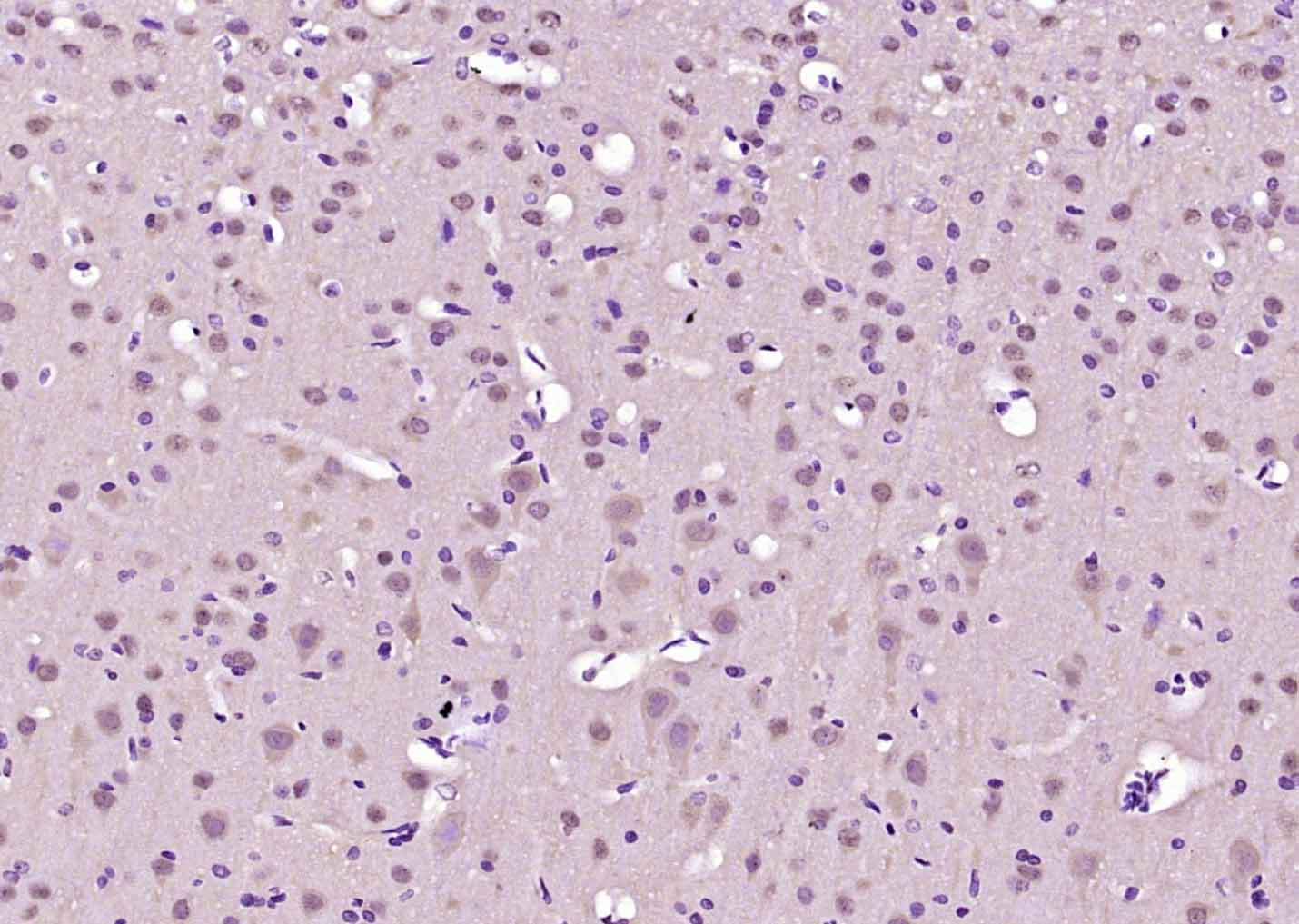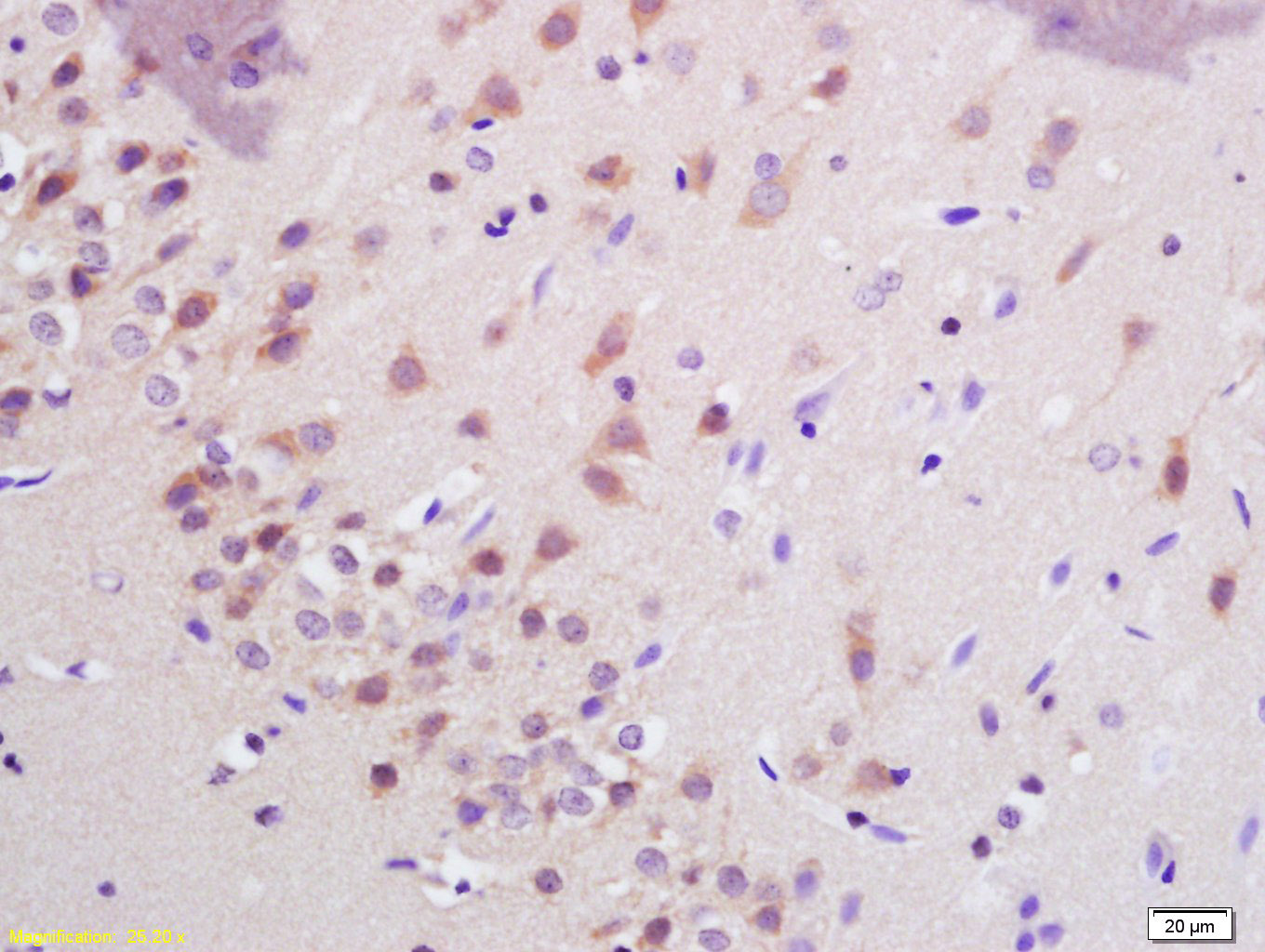
Rabbit Anti-SHANK3 antibody
KIAA1650; Proline rich synapse associated protein 2; Proline-rich synapse-associated protein 2; ProSAP2; PSAP2; SH3 and multiple ankyrin repeat domains 3; SH3 and multiple ankyrin repeat domains protein 3; SH3/ankyrin domain gene 3; SHAN3_HUMAN; Shank pos
View History [Clear]
Details
Product Name SHANK3 Chinese Name 富含脯氨酸突触相关蛋白SHANK3抗体 Alias KIAA1650; Proline rich synapse associated protein 2; Proline-rich synapse-associated protein 2; ProSAP2; PSAP2; SH3 and multiple ankyrin repeat domains 3; SH3 and multiple ankyrin repeat domains protein 3; SH3/ankyrin domain gene 3; SHAN3_HUMAN; Shank postsynaptic density protein; Shank3; Shank3b; SPANK 2; SPANK2. literatures Research Area Cell biology Neurobiology Channel protein Cell adhesion molecule Immunogen Species Rabbit Clonality Polyclonal React Species Rat, (predicted: Human, Mouse, Dog, Pig, Cow, Horse, ) Applications ELISA=1:5000-10000 IHC-P=1:100-500 IHC-F=1:100-500 ICC=1:100-500 IF=1:100-500 (Paraffin sections need antigen repair)
not yet tested in other applications.
optimal dilutions/concentrations should be determined by the end user.Theoretical molecular weight 186kDa Cellular localization cytoplasmic The cell membrane Form Liquid Concentration 1mg/ml immunogen KLH conjugated synthetic peptide derived from human SHANK3: 1151-1250/1741 Lsotype IgG Purification affinity purified by Protein A Buffer Solution 0.01M TBS(pH7.4) with 1% BSA, 0.03% Proclin300 and 50% Glycerol. Storage Shipped at 4℃. Store at -20 °C for one year. Avoid repeated freeze/thaw cycles. Attention This product as supplied is intended for research use only, not for use in human, therapeutic or diagnostic applications. PubMed PubMed Product Detail SH3 and multiple ankyrin repeat domains 1-3 (Shank1-3) of the Shank/ProSAP family are molecular scaffolds in the postsynaptic density (PSD). The PSD is an electron-dense structure underneath the postsynaptic plasma membrane of excitatory synapses that anchors and clusters glutamate receptors opposite to the presynaptic neurotransmitter release site. Shank proteins contain PDZ modular domains that coordinate the synaptic localization of ion channels, receptors, signaling enzymes, and cell adhesion molecules. The PDZ domain mediates protein-protein interactions via the recognition of a conserved sequence motif at the C-terminus of their target protein(s). Shank recruits betaPIX and PAK to spines to regulate postsynaptic structure and interacts with NMDA receptor and metabotropic glutamate receptor complexes. Transcript splice variation in the Shank family influences the spectrum of Shank-interacting proteins in the PSDs of adult and developing brain to ensure normal development.
Function:
Seems to be an adapter protein in the postsynaptic density (PSD) of excitatory synapses that interconnects receptors of the postsynaptic membrane including NMDA-type and metabotropic glutamate receptors via complexes with GKAP/PSD-95 and Homer, respectively, and the actin-based cytoskeleton. May play a role in the structural and functional organization of the dendritic spine and synaptic junction.
Subunit:
May homomultimerize via its SAM domain (By similarity). Interacts with DLGAP1/GKAP, MGLUR1A, MGLUR5 C-termini via its PDZ domain (By similarity). Interacts with HOMER1, HOMER2, HOMER3 and CTTN/cortactin SH3 domain (By similarity). Is part of a complex with DLG4/PSD-95 and DLGAP1/GKAP. Interacts with DBNL. Interacts (via PDZ domain) with PROSAPIP1 (via C-terminus) (By similarity). Interacts with BAIAP2.
Subcellular Location:
Cytoplasm (By similarity). Cell junction, synapse (By similarity). Cell junction, synapse, postsynaptic cell membrane, postsynaptic density (By similarity). Note=Postsynaptic density of neuronal cells (By similarity).
Tissue Specificity:
Expressed in the cerebral cortex and the cerebellum.
DISEASE:
Defects in SHANK3 are the cause of schizophrenia type 15 (SCZD15) [MIM:613950]. SCZD15 is a complex, multifactorial psychotic disorder or group of disorders characterized by disturbances in the form and content of thought (e.g. delusions, hallucinations), in mood (e.g. inappropriate affect), in sense of self and relationship to the external world (e.g. loss of ego boundaries, withdrawal), and in behavior (e.g bizarre or apparently purposeless behavior). Although it affects emotions, it is distinguished from mood disorders in which such disturbances are primary. Similarly, there may be mild impairment of cognitive function, and it is distinguished from the dementias in which disturbed cognitive function is considered primary. Some patients manifest schizophrenic as well as bipolar disorder symptoms and are often given the diagnosis of schizoaffective disorder.
Similarity:
Contains 6 ANK repeats.
Contains 1 PDZ (DHR) domain.
Contains 1 SAM (sterile alpha motif) domain.
Contains 1 SH3 domain.
SWISS:
Q9BYB0
Gene ID:
85358
Database links:Entrez Gene: 85358 Human
Entrez Gene: 58234 Mouse
Omim: 606230 Human
SwissProt: Q9BYB0 Human
SwissProt: Q4ACU6 Mouse
Unigene: 149035 Human
Unigene: 146855 Mouse
Unigene: 42876 Rat
Product Picture
Antigen retrieval: citrate buffer ( 0.01M, pH 6.0 ), Boiling bathing for 15min; Block endogenous peroxidase by 3% Hydrogen peroxide for 30min; Blocking buffer (normal goat serum,C-0005) at 37℃ for 20 min;
Incubation: Anti-SHANK3 Polyclonal Antibody, Unconjugated(SL12143R) 1:200, overnight at 4°C, followed by conjugation to the secondary antibody(SP-0023) and DAB(C-0010) staining
Bought notes(bought amounts latest0)
No one bought this product
User Comment(Total0User Comment Num)
- No comment




 +86 571 56623320
+86 571 56623320
 +86 18668110335
+86 18668110335

